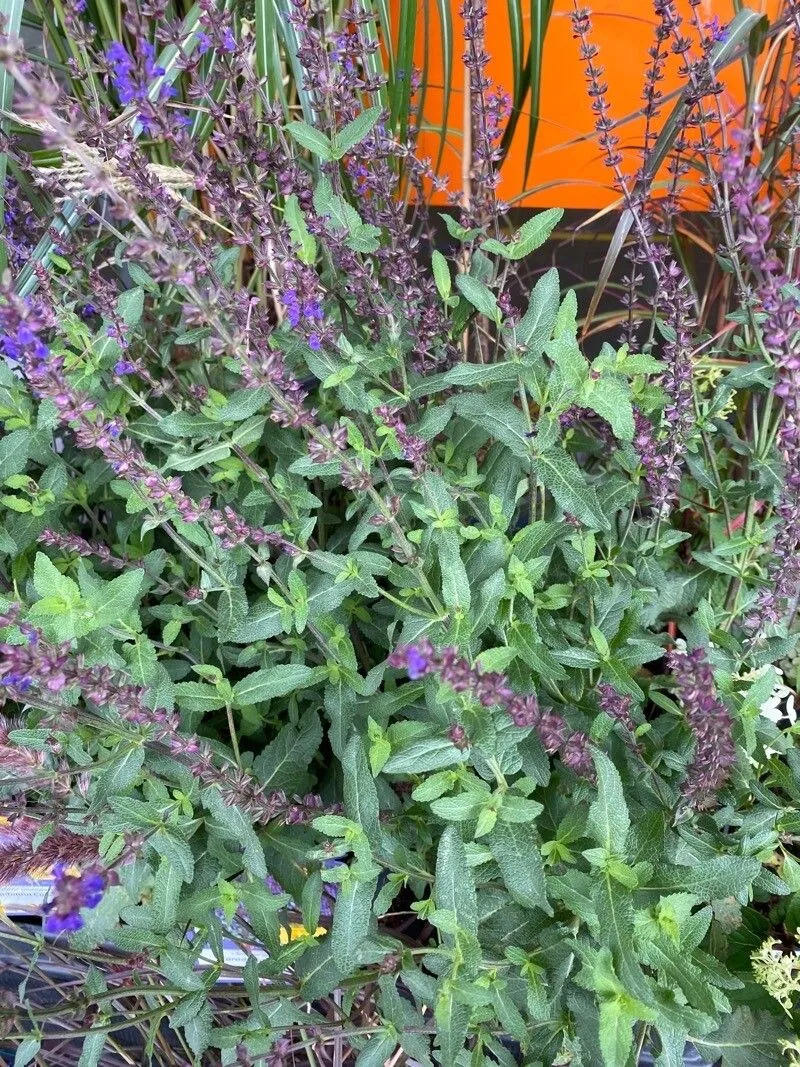
Author: L.
Bibliography: Sp. Pl. ed. 2: 35 (1762)
Year: 1762
Status: accepted
Rank: species
Genus: Salvia
Vegetable: False
Observations: Europe to W. Siberia and Afghanistan
Woodland sage, known scientifically as Salvia nemorosa, is a striking perennial herb that boasts a rich history and diverse geographic distribution. It belongs to the Lamiaceae family, a group renowned for its aromatic members, many of which have culinary and medicinal value.
Originally described in the seminal work “Species Plantarum” (second edition, 1762) by the illustrious botanist Carl Linnaeus, Woodland sage has since become a beloved plant for both gardeners and botanists alike. Its native range stretches from the fertile landscapes of Europe to the rugged terrains of Western Siberia and extends as far south as Afghanistan, showcasing its adaptability to a variety of climates and soils.
Characterized by its upright growth habit, Woodland sage typically reaches heights of 18 to 36 inches (45 to 90 cm). The plant features square stems—a hallmark of the Lamiaceae family—from which emanate its distinctively aromatic leaves. These leaves are often lanceolate to ovate in shape, with a slightly wrinkled texture and serrated edges.
The real spectacle, however, is the plant’s flowering display. From late spring to mid-summer, Salvia nemorosa produces dense spikes of tubular flowers. These blooms come in an impressive range of colors, including shades of violet, blue, pink, and white, often with contrasting calyxes that add further visual interest. The flowers are not only appealing to human admirers but also serve as a magnet for pollinators such as bees, butterflies, and hummingbirds, making Woodland sage an excellent choice for eco-conscious gardeners looking to support local wildlife.
Woodland sage thrives best in full sun but can tolerate partial shade. It prefers well-drained soil and is relatively drought-tolerant once established, making it a low-maintenance addition to various garden settings. Whether used in borders, containers, or as part of a mixed perennial bed, this versatile plant offers enduring beauty and resilience.
Despite its hardiness, Salvia nemorosa is generally easy to care for. Pruning spent flower spikes can encourage a second flush of blooms, while periodic division of older clumps helps maintain plant vigor and prevents overcrowding.
In summary, the Woodland sage is a botanical gem that combines aesthetic appeal with practical benefits. Its extensive range—from Europe to the Western Siberia and even reaching Afghanistan—attests to its robust nature and adaptability. Whether you’re an experienced gardener or a budding botanist, incorporating Salvia nemorosa into your landscape promises a rewarding and enduring horticultural experience.
Deu: hain-salbei
Fra: sauge des forêts, sauge des bois
Dan: småblomstret salvie
Lav: birztalas salvija, birztalu salvija
Swe: lehtosalvia, stäppsalvia
Fin: lehtosalvia
Est: metssalvei
Nob: steppesalvie
Nno: steppesalvie
Eng: woodland sage, balkan clary, blue sage, wild sage, wood sage
Lit: šilinis šalavijas
Nld: bossalie
Sme: rohtosálvia
En: Woodland sage, Balkan Clary, Blue sage, Wild sage, Wood sage
Be: Шалфей лясны
Bg: Горски конски босилек
Cs: Šalvěj hajní
Da: Småblomstret Salvie
Nl: Bossalie
Et: Metssalvei
Fi: Lehtosalvia
Fr: Sauge des forêts, Sauge des bois
De: Hain-Salbei, Steppen-Salbei
It: Salvia nemorosa
Lv: Birztalas salvija, Birztalu salvija
Lt: Šilinis šalavijas
Se: Rohtosálvia
Nb: Steppesalvie
Nn: Steppesalvie
Pl: Szałwia omszona
Ru: Шалфей дубравный
Sk: Šalvia hájna
Sv: Stäppsalvia, Lehtosalvia
Tr: Orman adaçayı
Taken Nov 4, 2022 by Kai Best (cc-by-sa)
Taken Aug 27, 2022 by Kai Best (cc-by-sa)
Taken Sep 26, 2022 by Jacques Zuber (cc-by-sa)
Taken Jun 13, 2020 by Dennis C (cc-by-sa)
Taken Sep 6, 2022 by burkhard-kurt (cc-by-sa)
Taken Jun 16, 2021 by Marius Dölling (cc-by-sa)
Taken Apr 11, 2020 by Morales Jacobo (cc-by-sa)
Taken Jun 26, 2020 by Martin Löffke (cc-by-sa)
Taken Sep 6, 2022 by burkhard-kurt (cc-by-sa)
Taken Sep 6, 2022 by burkhard-kurt (cc-by-sa)
Taken Sep 26, 2022 by Jacques Zuber (cc-by-sa)
Taken Aug 27, 2022 by Kai Best (cc-by-sa)
Taken Nov 20, 2021 by Dieter Wagner (cc-by-sa)
Taken May 15, 2022 by Fabrice Rubio (cc-by-sa)
Taken Jun 1, 2022 by Christine Thomas (cc-by-sa)
Taken Aug 27, 2021 by Didier Ploquin (cc-by-sa)
Taken Oct 9, 2019 by Jiří Vilím (cc-by-sa)
Taken May 28, 2020 by Dieter Albrecht (cc-by-sa)
Taken Jul 11, 2020 by Rico Mende (cc-by-sa)
Taken Jun 18, 2021 by Sabalotta Sabalotta Langstrumpf (cc-by-sa)
Taken May 28, 2022 by Lars Mannzen (cc-by-sa)
Taken May 18, 2022 by szoni arti (cc-by-sa)
Taken Jun 9, 2022 by Robert Stevens (cc-by-sa)
Taken May 21, 2022 by Maťko Martin (cc-by-sa)
Taken Jul 22, 2016 by Thomas Melan (cc-by-sa)
Taken Aug 27, 2021 by Meghdad855 M7 (cc-by-sa)
Taken Aug 15, 2012 by Photoflora – Benoit BOCK (©)
© copyright of the Board of Trustees of the Royal Botanic Gardens, Kew.
© copyright of the Board of Trustees of the Royal Botanic Gardens, Kew.
© copyright of the Board of Trustees of the Royal Botanic Gardens, Kew.
Family: Myrtaceae Author: (F.Muell.) K.D.Hill & L.A.S.Johnson Bibliography: Telopea 6: 402 (1995) Year: 1995 Status:…
Family: Rubiaceae Author: Pierre ex A.Froehner Bibliography: Notizbl. Bot. Gart. Berlin-Dahlem 1: 237 (1897) Year:…
Family: Sapindaceae Author: Koidz. Bibliography: J. Coll. Sci. Imp. Univ. Tokyo 32(1): 38 (1911) Year:…
Family: Asteraceae Author: A.Gray Bibliography: Pacif. Railr. Rep.: 107 (1857) Year: 1857 Status: accepted Rank:…
Family: Fabaceae Author: Medik. Bibliography: Vorles. Churpfälz. Phys.-Ökon. Ges. 2: 398 (1787) Year: 1787 Status:…
Family: Aspleniaceae Author: (Cav.) Alston Bibliography: Bull. Misc. Inform. Kew 1932: 309 (1932) Year: 1932…